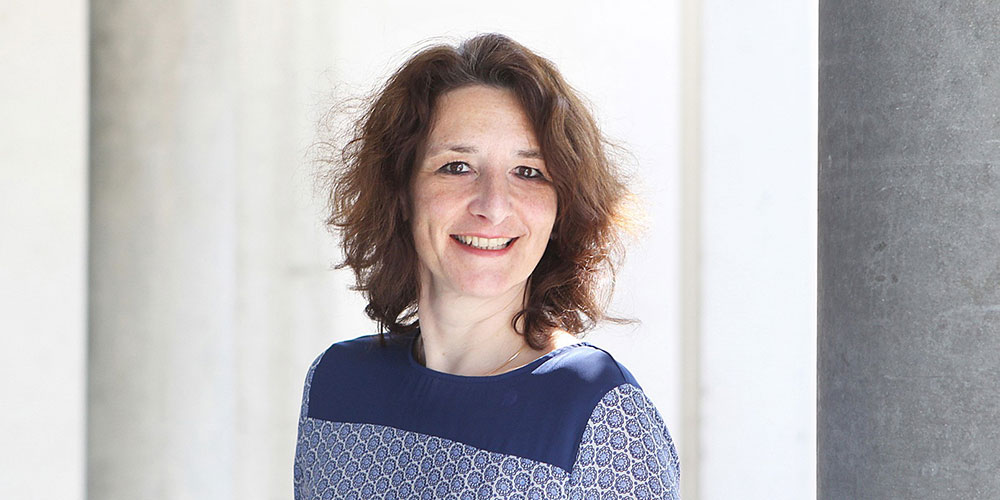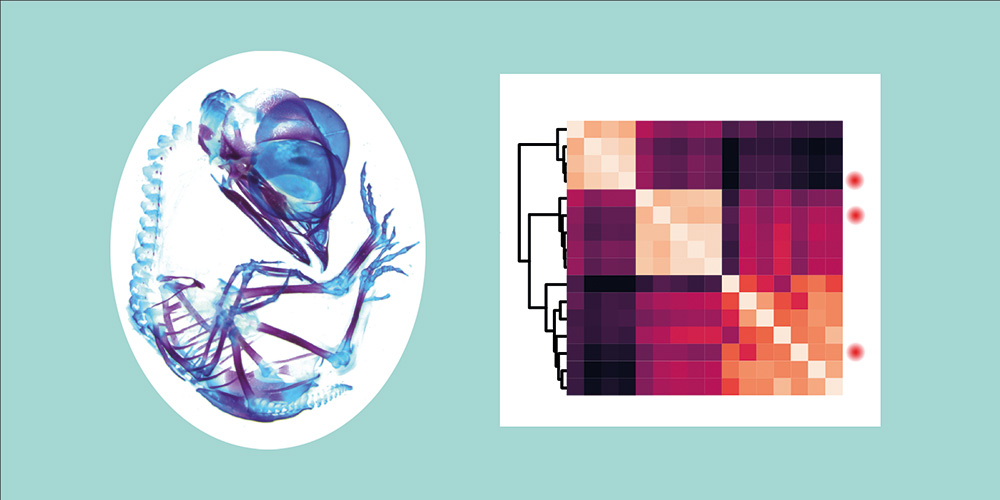The world`s oldest autograph by a Christian is in Basel
A letter in the Basel papyrus collection describes day-to-day family matters and yet is unique in its own way: it provides valuable insights into the world of the first Christians in the Roman Empire, which is not recorded in any other historical source. The letter has been dated to the 230s AD and is thus older than all previously known Christian documentary evidence from Roman Egypt.
11 July 2019
The earliest Christians in the Roman Empire are usually portrayed as eccentrics who withdrew from the world and were threatened by persecution. This is countered by the contents of the Basel papyrus letter P.Bas. 2.43. The letter contains indications that in the early third century, Christians were living outside the cities in the Egyptian hinterland, where they held political leadership positions and did not differ from their pagan environment in their everyday lives.
A family with Christian beliefs
The papyrus P.Bas. 2.43 has been in the possession of the University of Basel for over 100 years. It is a letter from a man named Arrianus to his brother Paulus. The document stands out from the mass of preserved letters of Greco-Roman Egypt by its concluding greeting formula: After reporting on day-to-day family matters and asking for the best fish sauce as a souvenir, the letter writer uses the last line to express his wish that his brother will prosper “in the Lord.” The author uses the abbreviated form of the Christian phrase “I pray that you fare well ‘in the Lord’.”
“The use of this abbreviation – known as a nomen sacrum in this context – leaves no doubt about the Christian beliefs of the letter writer,” says Sabine Huebner, Professor of Ancient History at the University of Basel. “It is an exclusively Christian formula that we are familiar with from New Testament manuscripts.” The name of the brother is also revealing, Huebner goes on to explain: “Paulus was an extremely rare name at that time and we may deduce that the parents mentioned in the letter were Christians and had named their son after the apostle as early as 200 AD.”
Determining date and origin
By means of extensive prosopographical research, Huebner was able to trace the papyrus to the 230s AD. This makes the letter at least 40-50 years older than all other known Christian documentary letters worldwide. It also provides important details on the social background of this early Christian family: Arrianus and his brother Paulus were young, educated sons of the local elite, landowners and public officials.
The location of the papyrus was also successfully reconstructed: It comes from the village of Theadelphia in central Egypt and belongs to the famous Heroninus archive, the largest papyrus archive from Roman times.
The papyrus letter is at the heart of Huebner’s new monograph Papyri and the Social World of the New Testament. Her book is aimed at a broad audience and shows how the papyri of Greco-Roman Egypt can help to illustrate the social, political and economic life of the early Christians. Furthermore, this year all Basel papyri will appear in a first edition in print in the supplements of the Archiv für Papyrusforschung. The digital publication appeared in June 2019 on the international database Papyri.info.
Original source
Sabine Huebner Papyri and the Social World of the New Testament
Cambridge University Press, Cambridge 2019, 214 Seiten.
doi: 10.1017/9781108556453
Further information
Prof. Dr. Sabine Huebner, University of Basel, Professor of Ancient History, Department of Ancient Civilizations, phone +33 78 2627 602, email: sabine.huebner@unibas.ch
Images
A high-resolution image for this press release is available in the media database
The Basel Papyrus Collection
In 1900, the University of Basel was one of the first German-speaking universities and the first in German-speaking Switzerland to procure a papyrus collection. At that time, papyrology was booming – people hoped to discover more about the development of early Christendom and to rediscover works of ancient authors believed to be lost. The Voluntary Museum Association of Basel provided CHF 500 to purchase the papyri, an amount equivalent to around CHF 5,000 today.
The Basel collection contains 65 documents in five languages from the Ptolemaic and Roman periods and late antiquity. Most of the collection is made up of documentary papyri, which are primarily of social, cultural and religious historical interest as they record the daily life of ordinary people 2,000 years ago. Most of the Basel papyri have not been published and remained largely ignored by research until now. The three-year editorial project led by Prof. Huebner was funded by the Swiss National Science Foundation and carried out in collaboration with the Digital Humanities Lab of the University of Basel.




